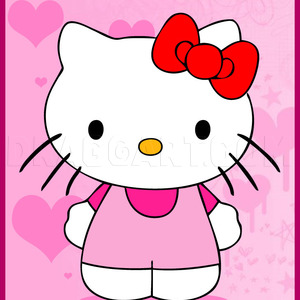1
If you want to get in all the details, use an 8-1/2 by 11 inch paper (A4) size. Use 3/4's of the picture with these guidelines. Draw the oval and half circle lightly with a No.2 or HB pencil. Make sure you draw them as seen in the picture.
2
This picture is filling up the 8-1/2" by 11" (A4) paper size. Now draw in the bisecting red line to balance his facial features and arm.
4
You can draw in the lines a. for forehead, b. for eyebrows, c. for eyes, d. for nose, e. for mouth, f. for chest.
5
Now draw in the lizard's (Dr. Connor) eyebrows, eyes, and nose. Take your time to draw in those tiny scales, which makes this tutorial advanced.
6
Observe where the lizard's features appear in relation to the guidelines. Draw in his mouth, teeth, and scales.
7
Seriously, I didn't intend this to be so challenging. But stay with me. TIP: You don't have to make the scales so small. Still, watch closely how the lizard's facial features, cheeks, outline of head, and myriad of scales relate to the guidelines. No
8
Now draw in his chest and the scaly bottom of his thigh. Look closely at the left part of his chest and stomach. Those lines are basically crosshatched. So don't worry about individual scales.
9
I congratulate you for getting this far because this layout of scales is very important. Make it a therapeutic session, drawing in all those little scales. Another thing, once I finished them for the pencil drawing, I sprayed those babies because I c
10
I made this line drawing especially for you if you don't want to do the pencil shading and blending part. Otherwise, let us continue to the pencil drawing part.
11
Here is the outline done with a 0.7mm mechanical pencil. Look closely and see if your lines look something like this. You can erase if certain areas like the eyes or nose don't line up. Observe how there are more details, like the dots. Be patient wi
12
Before we go any further, I want to mention some tools I used, which is the famous white acrylic (this time white opaque watercolor) and also sandpaper. Right before I shaded, I used 180-grit sandpaper and rubbed over the Prothean's face with a clean
13
TOP PICTURES: Here are the mechanical pencils with their crosshatches, lines, and circular shading. They start from light (H) to dark (B). The 2nd top picture includes 9B'S & BLENDERS You can actually shade a little with blending stumps without the g
14
The picture that goes with this step shows two different ways to hold your pencil to acquire certain effects. OVERHAND: Holding a sharpened pencil in normal writing form with fingers in the middle or near the lead gives you great control and thin/det
15
PENCIL STROKES & TONE, SHADING, TEXTURE -- For your convenience, I have inserted this step with different pencils, strokes to use. And you can study the shapes that make up this drawing universe, along with tone, shading, and texture.
16
The picture here is a great exercise for value shading. I've got a little secret tip for you to make things easier. You can download this to your desktop. First click on the picture to have access to full size. By right clicking on your mouse, you ca
17
After printing out a number of the above template, practice shading in the values like this picture. You become familiar with this shading technique that gives you more control and confidence.
18
This for me was a bit unusual because I sprayed my outline drawing first. Then I slid my 180-grit sandpaper under my paper outline. I rubbed on the paper with my blending stump to make the paper "bumpy." Now I started with the pastel application. If
19
Here I used my blending stump to "draw" in more shading to the scales and lines. I needed to keep white areas around his eyes, nose, mouth, chin, and chest. I made sure I didn't shade those areas. At this point, I have not used a pencil yet. After th
20
At this point, I sketched only with my 9B Graphite pencil and crayon. I added texture to his scales on his head with my 9B Pencil and gave shading around his head's outline. I took charge and grabbed my 9B Graphite Crayon and added more definition to
21
Here I took my blending stump to give more depth to and add more of the scales. You would see a lot more darkening and texture matching your reference once you use the blending stump.
22
Basically, I added more highlights with Opaque Watercolor to the crevices of his scales, and some of his facial scales around his eyes, nose and mouth. I especially paid attention to the darker scales with highlights on his arm. Now Dr. Connor, the L
23
Without highlights, your picture would have a flat appearance. Click on this picture to learn how to make your own picture POP out!
Comments 0
Details
June 9, 2012
Description: Why do I enjoy doing monsters? They are tons of fun and so different. Going to Wikipedia notes, The Lizard (Dr. Curtis "Curt" Connors) is a fictional character, a supervillain in the Marvel Comics Universe. He is an enemy of Spider-Man. The Lizard first appeared in The Amazing Spider-Man #6 (November 1963), and was created by Stan Lee and Steve Ditko. In 2009, the Lizard was named IGN's 62nd Greatest Comic Villain of All Time. Now we have an anticipated, blockbuster movie "The Amazing Spiderman" reboot coming this summer (3D too) July 3, 2012.
























































































